Valiant Prince Ivandoe Goes to America
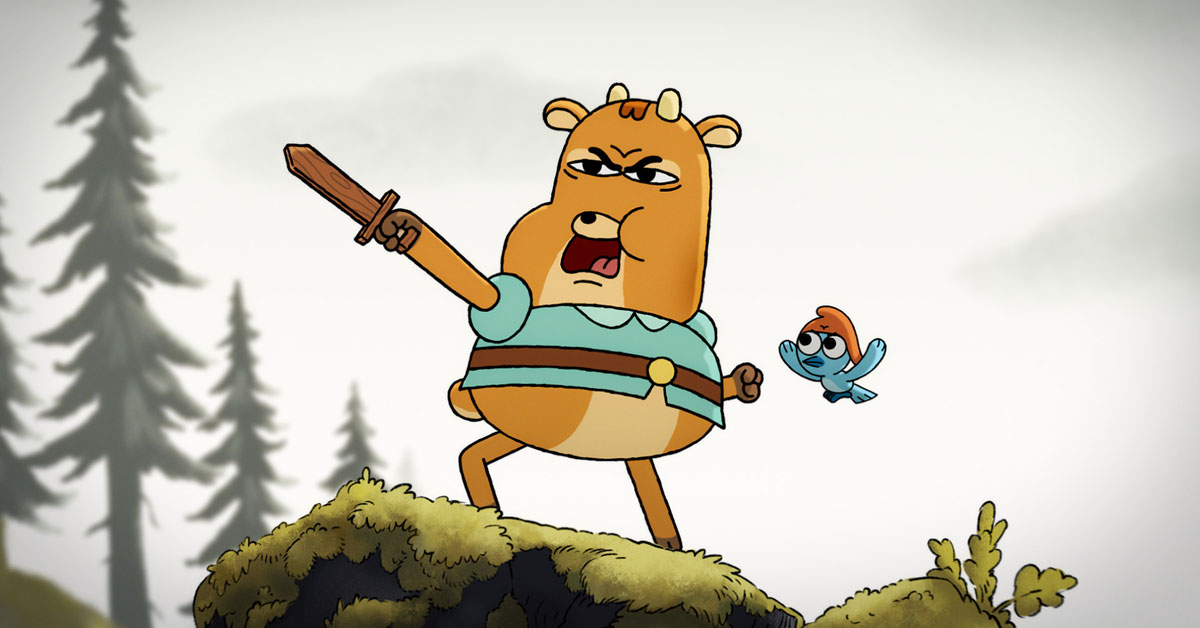
The Heroic Quest of the Valiant Prince Ivandoe is one of those rare shows that has been well-received by kids and parents, critics and broadcasters, all around the world. With a sensibility that combines tongue-in-cheek cultural references, snappy jokes and sight gags, creative visuals, and moments of authentic growth and relatability, the show has found a way to connect with a huge range of audiences. Despite a global roll-out that has made many of the episodes available online and provided social media sneak-peeks, the show has yet to actually air in the United States. The November broadcast premiere is hotly anticipated, and fans can’t wait to watch the new full-length episodes on Cartoon Network.
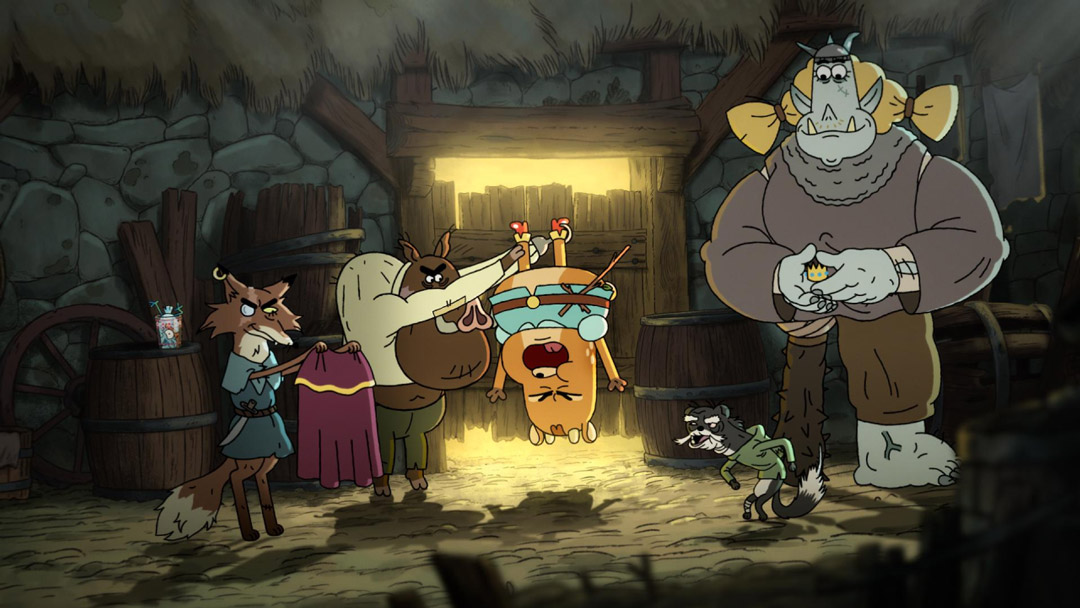
WA: The Ivandoe broadcast in the United States has been a long time coming, hasn’t it?
Christian: It’s really exceptional for Warner Brothers and Cartoon Network to put the US at the end of the schedule. All their shows are typically produced in America and first broadcast in the States before they are released in other countries. The Ivandoe short films went nearly everywhere else in the world but the US, and then the US release of the series was pushed back to November, so this is really our American premiere. When we worked on Gumball in London, that was the first real Cartoon Network show they ever made outside of the US, and Ivandoe is the second. They may produce more shows in Europe and Asia in the future; there are so many good artists in Europe, and so many tax benefits, so they are starting to do more.
Christian: Our experience with Ivandoe has been really unusual compared to other Cartoon Network productions and people who are creating shows with other broadcasters. When we were animators on Gumball, and we heard that they were open to new ideas and pitches, all of us artists thought that you would have to be Somebody in order to pitch. Everyone else who pitches their own show is a story artist or script writer, or very experienced storyboarders – that’s more of the natural progression and how things are usually done. We thought you would already have to be a very successful, experienced person.
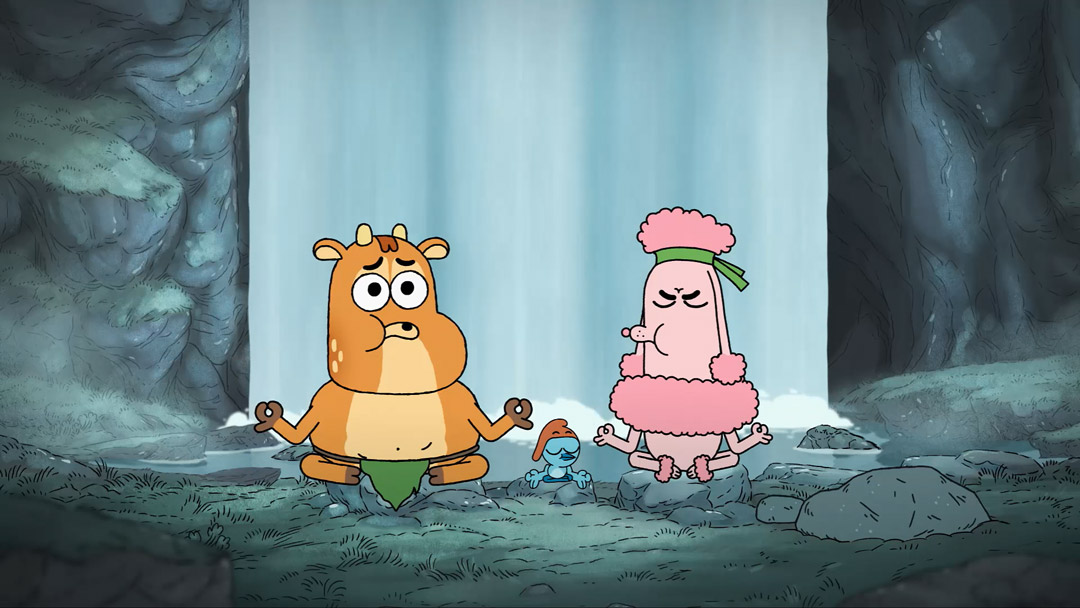
We were the first people to pitch who were “just” animators, and we were very young, so we weren't even experienced directors who had produced something before, but we still wanted to try to make our own show. Of course we wanted to make something as good as possible, but our first ambition was just to make something; to try and tell our own original story and see what happened. So we tried it, and it just grew and grew.
Eva: We didn’t know it was going to be a project that lasted for years and years. There were so many baby steps along the way. In the beginning, it was a huge accomplishment to get Cartoon Network to just look at our stuff, and we were so excited about that.
WA: What has it been like working with Cartoon Network?
Christian: It was really special that they were open to our ideas, and they were very nurturing. They took us in and helped us develop, because they liked the way we were thinking. They helped us get a very good team around us who could support us and help us develop.
Eva: Yes, Cartoon Network has been really good to us. I mean, we were animators, so we had to learn everything. We had to learn how to write, and how to direct and everything else, so we spent a lot of time with them and Daniel Lennard just developing our own skills toward being able to do this big project. We always kind of knew what we wanted to do when we started production, but we did need time to learn all these things. It’s taken many years. We’ve seen other people get green-lit, and suddenly their show is in production, and suddenly it is being released, and we would get a bit jealous and impatient. But looking back it feels like it was all worthwhile, and that we learned really valuable lessons at each new step, and it was definitely the right thing for this show to have that much time to grow.
Christian: Like Eva said, it could get frustrating when it seemed like everything was happening so slowly for us compared to other people. We had to keep on re-pitching and developing and make a new pilot and another new pilot, but all of that process gave us time to evolve as directors and not get too overwhelmed. There are all these producers and different people who give notes… there’s a lot of things you have to deal with. So it was definitely better for us that it wasn’t all at once, and we didn’t go 0 to 100 in a single year.
If you are totally green and fresh and inexperienced and you get thrown into this huge machine and the complexity of directing a TV show, you can easily get overwhelmed and crash and burn. It can be too much and too stressful. So this gradual, step-by-step process has been healthy for us – it's helped us get into it mentally, and build the skills to be able to lead hundreds of people and deal with all that complexity.
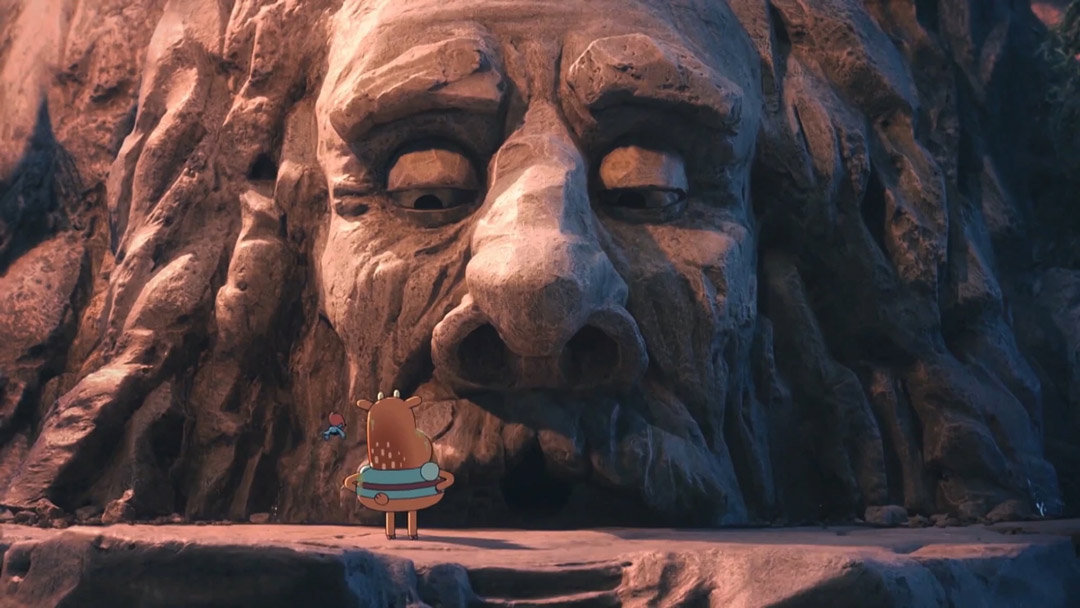
WA: As you’ve mentioned, the project grew so much over time – did you have a plan all along for a big, successful series?
Christian: There’s not one recipe for success on how to get your own series. It is also very different depending on your network. Warner Brothers and Cartoon Network have one way of doing it, whereas if you went to Netflix or Disney or BBC or DR there would be a different way. They all have different approaches for how you pitch and how they work and how they develop shows.
Christian: When we started developing the longer format, we spent over a year just working on the new concept. We had to convince Cartoon Network that Ivandoe could sustain 11 minute episodes. It has to compete with all the American shows, so it has to almost be better than they are, while costing less. Even though we had done the shorts and they had done well, we still had to re-pitch and re-convince them from scratch that we could do a series and it would work and be worth the investment. So we spent a year writing the scripts and expanding the world, but also getting to know the characters more, defining the characters better, and exploring the relationships more deeply. We had to figure out everything all over again: we did look tests, and a new pitch bible, and a new animatic and tested a new pilot… we had to basically start over from scratch.
Eva: As storytellers, we had to figure out how to do these longer 11 minute stories, with complete arcs, instead of just one little punch line or gag. It took a long time, and of course you cross your fingers hoping it’s all going to work, but a lot of stars have to align. There’s a lot of people and a team that you have to get right to achieve what you want.
Christian: When we did the shorts, it was such a small team and so hands-on – we were doing our own clean-up animation and helping with rigging and everything. It was like working on a short film – everyone did a bit of everything. Sun Creature was a new, young studio at the time, and we were new directors, and most of the team were new to this kind of production, so it was very improvisational, figuring it out as we went along. As soon as we started the big production, we knew that everything had to be much more organized, and we would have to revise our whole pipeline.
Eva: For the series, we had to change the look, because making new miniature sets for 40 episodes would have made it the most expensive show ever . Each episode is in a new location, we never go to the same place twice, and in every episode we meet new characters we haven’t met before, which makes it very complicated, and impossible to keep doing the practical sets we did in the shorts. We also knew we needed to update the character designs and start over with animation.
It would be great to have an image of the backgrounds for the shorts and for the series, to visualize this difference
WA: How else did the show change between the shorts and the series?
Eva : Although the show is basically the same at its core, in the shorts it was so snappy we almost didn’t have time for a full story arc, or to get into deeper things like their personalities, and develop the drama… as a series, it had to move beyond just silly little gags, and be more relationship-driven.
Christian: For the ten shorts, it was a fairly small team and a fairly short schedule compared to other Cartoon Network productions. Normal Danish productions have a much lower budget than most international Cartoon Network shows, so when some Danish directors and producers heard our price per minute and our schedule, they were like “Whoa! You have so much time and money!” But compared to a normal Cartoon Network show, it was super cheap, because it had to compete with the American shows and productions from around the world in order to actually be green-lit and move ahead. So it’s all relative, really; the 10 shorts had a small budget, but for the 40 episode series we actually had quite a long time; we had two years. For some Danish shows, that seems like a crazy amount of time.
Eva: All the lead artists from the shorts transitioned to the series. We tried to keep the same people. Once you find the right people who understand you and who understand the vision, it just makes sense to keep them around. We also had some really good series producers, who were very keen on making it a good experience for people to work on.
We heard an American producer say that on her productions she had a “No Asshole” rule, and we thought that was quite nice – let's not be assholes. Let's all try to be nice people and do this in a way that doesn't hurt others. Everyone knows that these productions can get crazy, and at times it did get crazy, and it did... well... suck, but for the most part people were really really nice, and understood that we were all trying to do the same thing. Everyone was working toward the same goal.
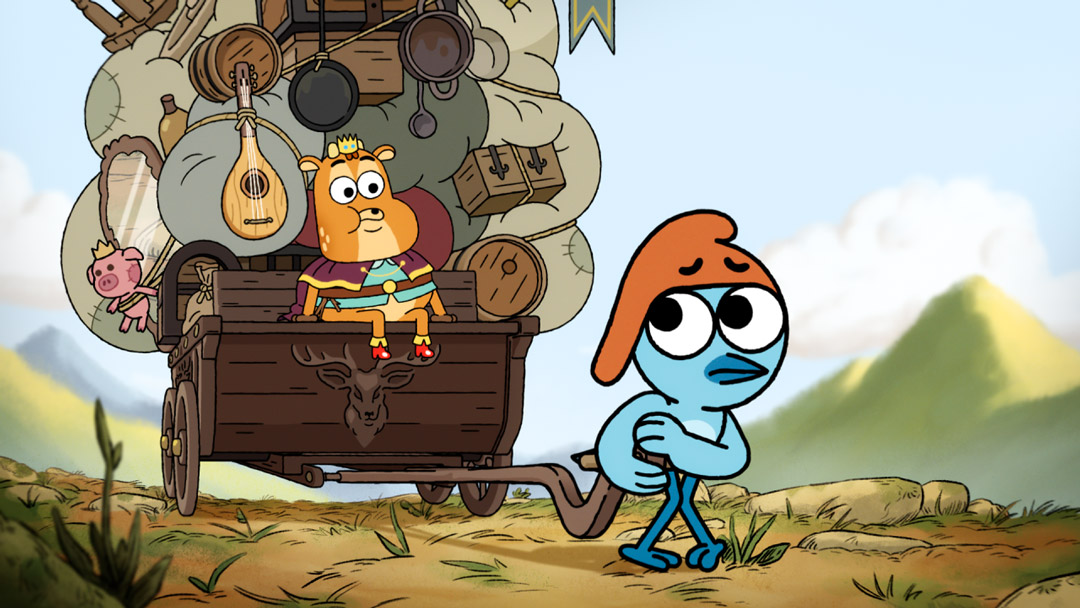
Christian: We had quite a big team spread out across a lot of countries. We had some people in the UK, and a huge team in France, and some people in Denmark. Our production started in February, and then Covid happened in March. It was the worst timing. We were supposed to have a huge in-house team in Copenhagen, a huge team in-house in Bordeaux with the Sun Creature team there, and then with the studio Vivement Lundi in Rennes, so we were supposed to have all these in-house teams. Of course, because of Covid, everyone had to work from home, so there were a lot of things we couldn’t do. However, it turned out to be good in some ways – we weren’t restricted by people’s locations, and we ended up being able to recruit people all across Europe and even some in the US. Sun Creature and the Cartoon Network producers and the team in Rennes all did a really good job of keeping in touch with everyone and trying to keep people sane and making sure that people felt comfortable. The lead artists and supervisors did a lot of things, like virtual drinks with the teams, to try to make sure everyone got through it, because it was such a long production – a couple of years. We were lucky that we could keep the production going, and that we were able to keep everyone happy as we went along. It was really nice, and the producers were excellent.
WA: Will you keep working on Ivandoe, or on kid’s television in general?
Eva: I love kid’s TV, and I love kids movies, and I want to keep making stuff for kids and families. Some of our ideas work for different age ranges, but kid’s content is probably the most natural fit for our humor. Obviously we would like there to be more Ivandoe, but now it’s too soon to say – we have to see how it does in America.
Christian: Right now there’s a lot of insecurity in the states with all the streamers, so they are being cautious about green-lighting new things. We won’t know anything about our next steps until we see how Ivandoe does in the States. We are really looking forward to finally reaching the US, since this November is the first time Americans will get to see Ivandoe. We hope they like it.
Credits
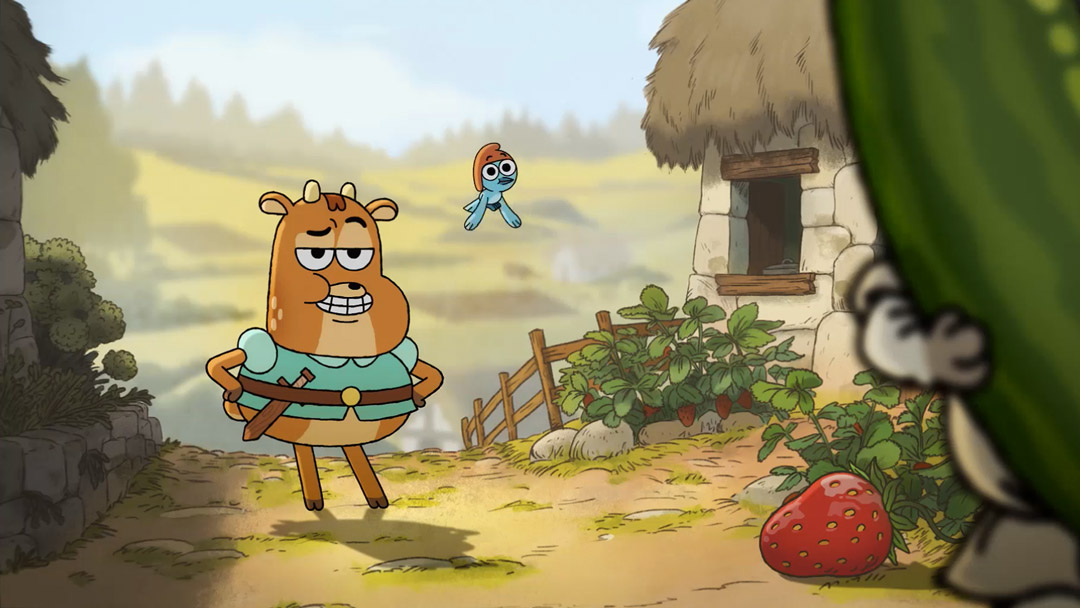
The Heroic Quest of the Valiant Prince Ivandoe animated series premieres on Cartoon Network in the US on November 11th. It is also available on Max, Apple TV, and other platforms, and you can play interactive Ivandoe mini-games at https://www.cartoonnetworkme.com/show/ivandoe.
We look forward to the next chapter in this adventure!
Follow Christian Bøving-Andersen:
Follow Eva Wallberg:
Collaborators

WeAnimate Magazine is dedicated to all the people who animate and make things, lines, and ideas come to life.
WeAnimate ApS is founded and owned by The Danish Animation Society (ANIS) www.anis.nu
Tell us what you think? Tell us at hello@weanimate.dk | #weanimate | our Privacy Policy